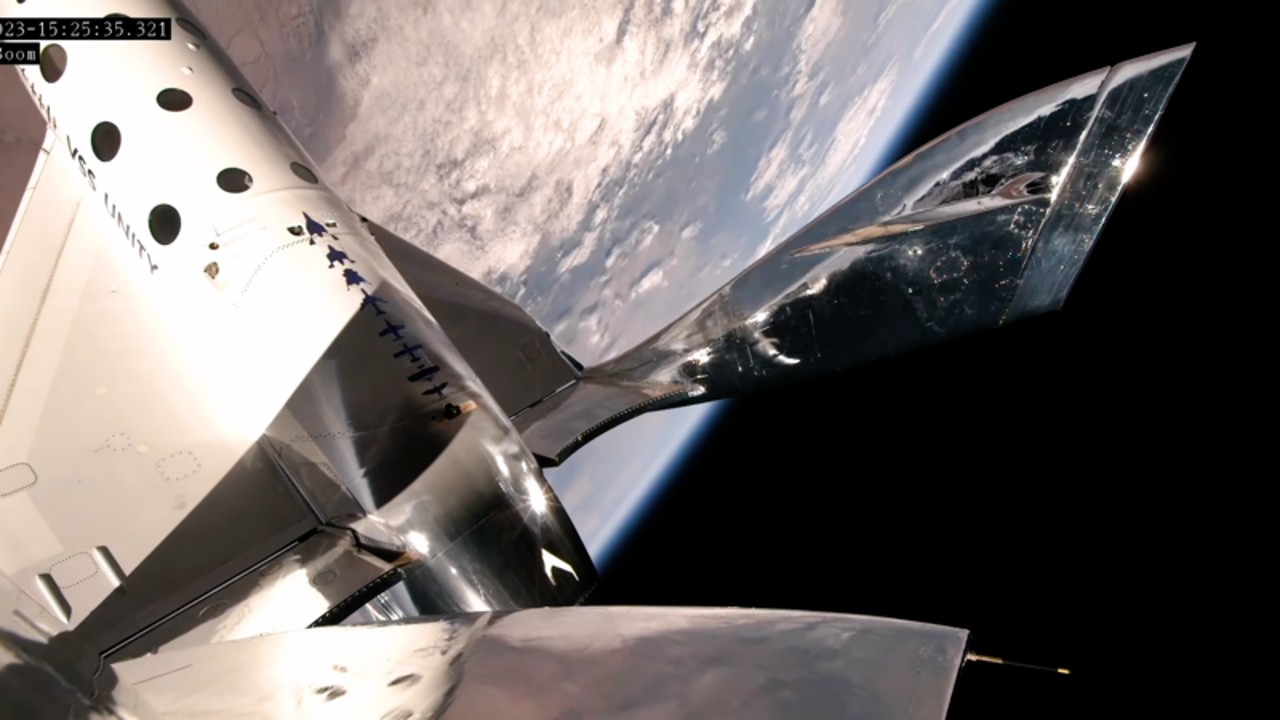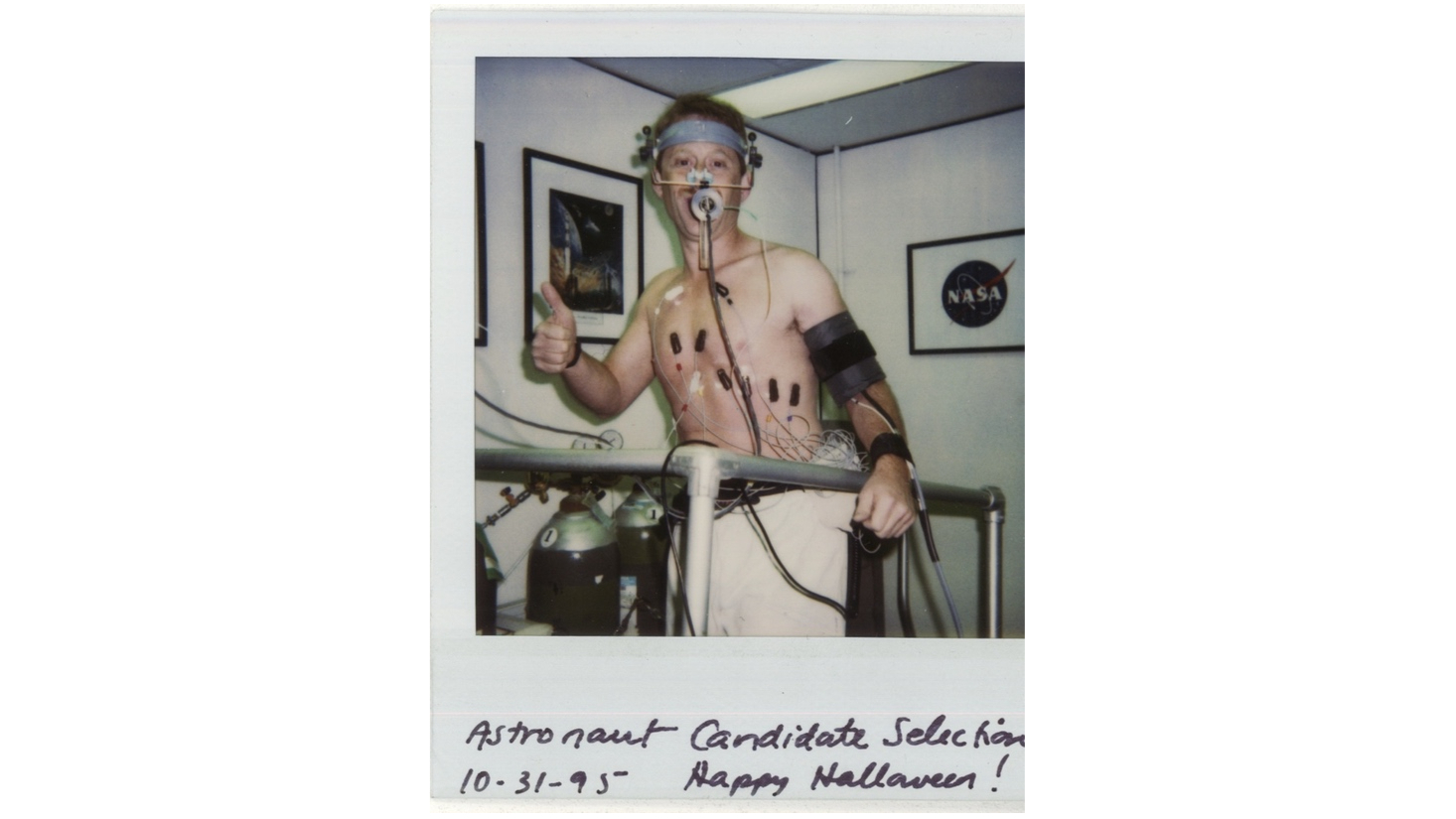New Horizons' Alan Stern will fulfill a lifelong dream on Virgin Galactic spaceflight this week
He's most excited about 'accomplishing the objectives and having a damn good time.'

When Alan Stern launches to suborbital space this week on Virgin Galactic's fifth commercial flight, he'll accomplish the goal of a lifetime. But it won't be all play — Stern will be working during almost the entire mission.
That won't dilute the joy of fulfilling his childhood dream, however. Growing up in the Apollo era, Stern watched flights to the moon launch with some regularity. Like many of his generation, he expected crewed spaceflight to become routine, expecting many more trips to the moon and, in relatively short order, voyages to Mars as well. Instead, he watched as only a handful of people climbed out of Earth's atmosphere.
Stern, a planetary scientist at the Southwest Research Institute (SwRI) in Boulder, Colorado and principal investigator of NASA's New Horizons mission to Pluto and the outer solar system, will soon join their ranks. On Thursday (Nov. 2), he will take a brief trip to suborbital space on Virgin Galactic's Galactic 05 mission.
"I've done a lot of things over the last 30 years that have led me to be prepared," Stern told Space.com. To be so close to heading into space is "really gratifying [and] a little surreal," he said.
Related: Destination Pluto: NASA's New Horizons mission in pictures
Preparation
Preparing for spaceflight isn't like packing for a family vacation. As part of his training for Galactic 05, Stern has completed three centrifuge sessions and three high-performance jet flights.
The jet flights weren't like his previous research trips, during which he performed airborne astronomy on board F-18 Hornets and other combat aircraft. Instead, the flights reached high levels of acceleration, or Gs, to help prepare the body for the rapid speeds achieved at launch.
Breaking space news, the latest updates on rocket launches, skywatching events and more!
"I can tell you, at the end of those flights, it's just like that scene in the original 'Top Gun' movie in the locker room," Stern said. "You're raining sweat."
But he doesn't expect his actual flight to be quite so physically demanding. "Just like athletes, you train harder than the event," Stern said.
A lifetime accomplishment
Stern's fast-moving training isn't the only way he has prepared for spaceflight. He has been working toward that goal throughout his career.
"As a young engineer, and then as a young scientist, I did everything I could think of to make myself a top candidate to be a NASA engineer," he wrote on Oct. 23, in a piece for The Space Review.
That included scuba diving, traveling to the South Pole, becoming a commercial pilot and even working as a state-certified Emergency Medical Technician. He applied six times to become a NASA space shuttle mission specialist and was at one point approved to fly as a shuttle payload specialist, though he was later replaced by another researcher.
Over the last decade, Stern has been encouraging scientists to travel into space via commercial space flight. Since 2010, Stern has helped to organize the Next-Generation Suborbital Researchers Conference, which brings together hundreds of suborbital researchers, educators, flight providers, spaceport operators and others.
Stern has also campaigned tirelessly for the research and education marketplace in suborbital flight.
"When Virgin and Blue Origin started their business, they had only one interest, and it was flying tourists," Stern said. "I started talking to them about flying researchers and educators. They both do that now."
"All the suborbital flight providers in this commercial era are doing research in addition to tourist flights," he said.
For Stern's short flight, he has eight objectives laid out by SwRI. Most of those will help set the stage for his next suborbital flight, which will be funded by NASA. That upcoming flight will be purely research, Stern said.
While in the air, he will be working to familiarize himself with how the actual experience differs from training simulations, a process that will make future research flights flow more smoothly. He'll be wearing a bioharness modeled after a design flown on more than two dozen space shuttle missions, according to his flight team member Dan Durda, also of SwRI. The harness will measure his blood pressure and heart rate and compare those figures to data from his centrifuge runs and zero-g flights, as well as to the Virgin-Galactic-provided biomedical band.
As preparation for his upcoming NASA flight, Stern will also carry a functional mockup of the camera that he will carry on his second trip into space.
But all of the objectives aren't strictly business. One thing Stern will be doing is to "mitigate the overview effect distractions" — a fancy way of saying, getting a look out the window now so it won't distract him on the next flight.
"When we're there to get a very specific job done…we pretty much can't 'afford' the 'distractions' of the rest of this amazing experience," Durda told Space.com by email. "So, getting that all 'out of the way,' so to speak, is an important risk-reduction aspect of a first flight like this."
Related: Virgin Galactic launches 3 of its original space tourist customers to the final frontier (video)
'A damn good time'
Does Stern have any concerns about his upcoming trip?
"You mean, other than I could be killed?" he said.
He acknowledged that the risk is higher than it would be on a commercial airline flight. At the same time, with more than 24 zero-g flights under his belt, Stern has experience with potentially dangerous situations.
His bigger fear is smaller than that. In the week before his flight, Stern flew to Boston for a meeting with more than 100 people to discuss the New Horizons mission. "I don't want to get something from somebody and be sick next week," he said.
That fear is well founded. During Apollo 13, NASA astronaut Thomas Kenneth Mattingly was kept from launching into space due to exposure to German measles, which he never contracted. (Mattingly later flew on Apollo 16.)
While exposure wouldn't be enough to keep Stern from going to space, being sick likely would affect his flight capability. "I'm masking a fair amount," Stern said.
After several decades of trying to get into space, what is Stern most excited about?
"Accomplishing the objectives and having a damn good time," he said.

Nola Taylor Tillman is a contributing writer for Space.com. She loves all things space and astronomy-related, and always wants to learn more. She has a Bachelor's degree in English and Astrophysics from Agnes Scott College and served as an intern at Sky & Telescope magazine. She loves to speak to groups on astronomy-related subjects. She lives with her husband in Atlanta, Georgia. Follow her on Bluesky at @astrowriter.social.bluesky


